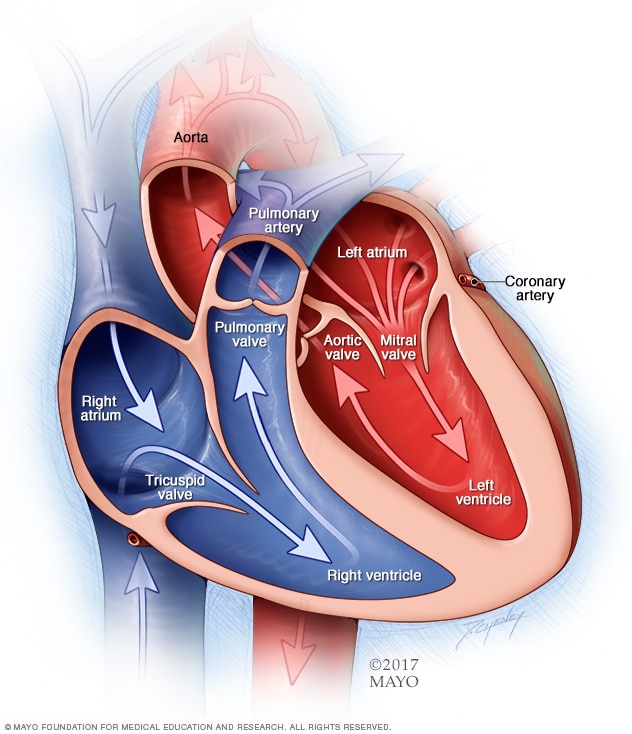Cardiovascular diseases typically denote common serious problems such as heart attacks, heart failure, and sudden cardiac death. However, your cardiovascular system can develop other complications, even without having a heart attack or a stroke.
Many cardio specialists recommend that people learn about different heart complications. Knowing these heart diseases would help reduce the number of people suffering and dying because of such illnesses. This article will discuss the different heart complications and symptoms you need to look out for.
Primary Causes Heart Diseases
According to the National Center for Biotechnology Information, the leading cause of death globally is heart disease. This is a condition that ruptures or blocks the blood vessels in the heart. If you want to reduce your risk of developing heart diseases, you need to reduce the amount of salt, fat, and sugar you consume.
Trans fat is an unhealthy ingredient found in hamburgers, sausages, hot dogs, junk food, frosted strawberries, and processed food. The more you consume these unhealthy ingredients, the more you increase the risk of damaging your cardiovascular system.
Heart Diseases You Should Look Out For
Cardiovascular diseases include a number of complications and symptoms that gravely affect the heart and its functions. Many of us tend to take our heart health for granted, failing to get regular regular physical examinations and check-ups, but being aware of different heart complications can help mitigate the damage in your cardiovascular system. Once you know what to look for, it’s easier to know when you might need attention from a medical professional. Here are some of the common heart complications and symptoms that you should always keep in check:
Heart Arrhythmias
Arrhythmias occur when the ventricular muscle action causes a person’s heartbeat to be far from normal. Abnormal rhythms may be caused by physiological reasons (weak heart muscle tone) or heart injuries (e.g., enlarged heart valve).
Heart arrhythmias may also be caused by genetic mutations, unhealthy diet, heart injuries, or other problems in the upper or lower chambers of the heart. Problems with one of the chambers can cause insufficient blood flow to the heart, resulting in an abnormal heart rhythm. If left untreated, it could lead to asystole, which is the total cessation of electrical activity from the heart.
Atherosclerotic Disease
Atherosclerotic disease, commonly referred to as carotid artery disease, is a type of non-pulmonary vascular disorder that can lead to death. The primary cause of this disease is the buildup of cholesterol and fatty deposits in the arteries. The accumulation of fat deposits causes the arteries’ walls to narrow, which in turn, causes blood flow to slow down.
Symptoms of the disease include:
- Chest pain
- Chest pressure or discomfort
- Shortness of breath
- Pain or numbness in legs or arms
- Pain in the upper parts of the body like the neck, throat, or back
Coronary Heart Disease
One of the most common heart problems is coronary heart disease. It’s a condition where fatty deposits (fat streaks and plaques) build up in the walls of the coronary arteries. They block the blood flow from the heart to various parts of the body and cause painful heart attacks.
Coronary heart disease is one of the many complications that are caused by atherosclerotic disease. The first symptom that most people experience is a heart attack. The following are signs when a person is about to have a heart attack:
- Chest pain
- Sudden weakness
- Lightheadedness
- Nausea
- Shortness of breath
Dilated Cardiomyopathy
Dilated cardiomyopathy (DCM) is a cardiovascular condition characterized by excessive compression of the right ventricle or left atrium of the heart. This can lead to fast heartbeats or tachycardia, even without the presence of arrhythmias. Dilated cardiomyopathy also leads to breathlessness (also called chaotic currents) in low blood pressure patients.
This complication can have various clinical manifestations, depending on its specific pathophysiology. Commonly, the first clinical manifestation is an enlarged heart. Other clinical manifestations may include enlargement of the left atrium and the left ventricle wall, weakness of the cardiac muscles, congenital heart defects, myocardial infarction, and heart failure.
Summary
Heart diseases can occur based on your diet or genetic mutations. Some genetic heart complications can be detected at birth and fixed with surgery early on. However, this is not an assurance since patients with this kind of illness require long-term care.
Moreover, there are also heart complications that are primarily caused by a person’s unhealthy lifestyle. Eating too much salt, sugar, and unhealthy fats leads to the development of heart diseases.
To keep your heart healthy, you must make the necessary lifestyle changes. Remember that a healthy lifestyle leads to a healthy heart and improved well-being. Furthermore, if you’d like to be prepared in the event that someone around you experiences a cardiac emergency, it’s worth looking into earning your ACLS, PALS, or BLS Certification.
